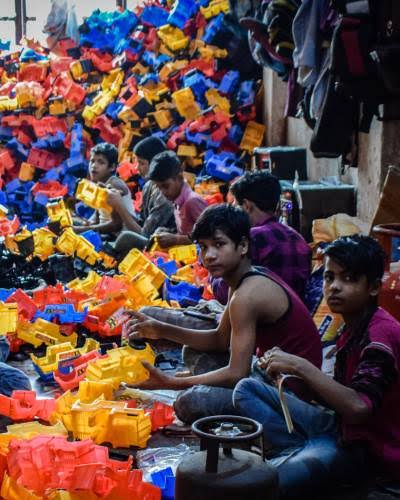Taking away the last resort
“One of the great mistakes is to judge policies and programs by their intentions rather than their results.”
– Milton Friedman
A child’s right to work is determined by age, level of risk, and whether it hinders schoolwork in any way. According to laws like India’s Child Labour (Prohibition and Regulation) Act of 1986, followed by the Amendment Act of 2016, individuals under the age of 14 are not allowed to work in any way that is not specifically authorized. The US Department of Labour introduced stricter child labour regulations and higher fines for violators as recently as June 2010. After all, nobody wants to recreate Charles Dickens’ dystopia, where children are forced to work in deplorable conditions for hours on end. However, there is another side to the story that we must consider.
Let us look at a study published in October 2013 by the National Bureau of Economic Research. It examines how child labour data has changed in India since 1986, when the country stopped hiring children under 14 to work in manufacturing. Nicholas Li, Leah K. Lakdawala, and Prashant Bharadwaj (2013) found that the child labour law had unintended effects. According to the data, child labour increased after the ban, whereas child wages went down. There were 1.7 to 1.9 percentage points more children working compared to those not working, which meant that the average amount of child labour had increased by 12.5% since the ban. The paper demonstrates that manufacturing wages are still high enough for children to work there even after the prohibition. However, several legal hurdles made it difficult for children to enter the manufacturing industry. Hence, there was a rise in child labour in agriculture in the absence of legislation in this domain.
These results support the theory which argues that families resort to children working to make ends meet. The ban created a black market in child labour that reduced a family’s earning power. When child wages go down, low-income families push more children into child labour to compensate for the lower wages. The increase in child labour comes at the expense of reduced school enrolments. The economists also found that households were worse off after the ban on several parameters, such as spending, consumption, calorie intake, and holdings of assets. (Fagerstorm 2016)
When a kid is forcibly pulled from the workforce to attend school, we must analyse what the child and society must forego before he may attend school. In economics, this is known as the opportunity cost. Simply put, the opportunity cost is what you must give up to get something. The sacrificed benefit or value could be related to a decision in a person’s personal life, business, economy, environment, or politics. When children work, they do so because they do not have a better alternative available. If they stop working, they need to see that something better is available. The opportunity cost is way higher when they choose an alternative to working.
In principle, it makes sense to ban child labour. However, in practice, it pushes many families into more deplorable conditions. A free society would not engage in child labour unless it were the least bad choice for the family. When the least bad choices are taken away, they resort to even worse options like shady forms of child labour.
Noble intentions alone do not always guarantee positive results, despite how well-meaning they may be. It is always a good idea to respect the principle of unintended consequences.
Author: N. Tejas
About the Author: Student of IPM-01
References
- Bharadwaj, P., Lakdawala, L. K., & Li, N. (2020). Perverse consequences of well intentioned regulation: Evidence from India’s child labor ban. Journal of the European Economic Association, 18(3), 1158-1195.
- Fagerstorm, M. (2016, September 9). Sweatshops, Child Labor, and the Global Economy. Medium.
https://medium.com/@MattJFstrom/sweatshops-child-labor-and-the-global-economy-af309c592de7
#iimbodhgaya #theenlighteningiim #childlabour #lowwages
#children #workforce


